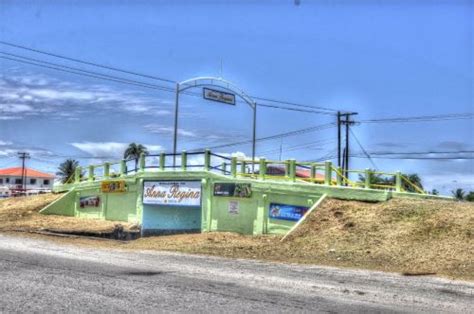The Anna Regina High Bridge, located in the town of Anna Regina on the Essequibo Coast, holds historical significance as a key piece of civil infrastructure in Guyana. Here’s a detailed look at its history:
Origins and Construction
The Anna Regina High Bridge is believed to have been constructed during the Dutch colonial period, though the exact year remains unknown. Its design reflects the engineering priorities of the time, as it was built high enough to allow sugar punts to pass underneath. These punts were essential for transporting workers to the dam and sugarcane to nearby factories, making the bridge a vital component of the region’s thriving sugar industry.
Role in the Sugar Industry
During its early years, the bridge played a crucial role in supporting the sugar plantations that dominated the Essequibo Coast. It facilitated the movement of goods and labor, contributing to the economic development of the area. The bridge’s strategic location and functionality made it an indispensable part of the plantation system.
Cultural and Historical Significance
The Anna Regina High Bridge is more than just a piece of infrastructure; it is a symbol of the region’s colonial past and its agricultural heritage. Over the years, it has become a landmark in Anna Regina, representing the town’s historical connection to the sugar industry and its Dutch roots.
Present Day
Today, the Anna Regina High Bridge stands as a monument to Guyana’s history. It is recognized for its historical and cultural value, attracting visitors interested in the country’s colonial past. The bridge remains a testament to the engineering ingenuity of the Dutch and the economic importance of the sugar industry in shaping the Essequibo Coast.

